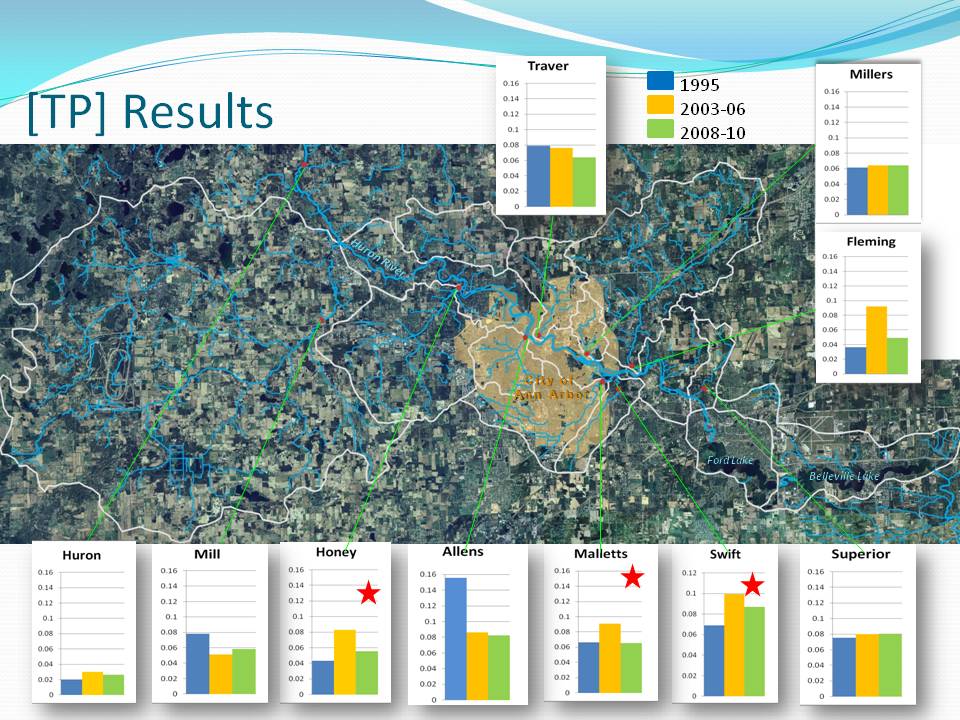
The 2010 Water Quality Monitoring Program results show that phosphorus concentrations have decreased by 28% in Ann Arbor tributaries compared with a 17% drop in tributaries outside the city. The total phosphorus load being delivered to Ford Lake is now near the target levels established by the Michigan DEQ in 1995. Also, phosphorus concentrations in the Chain of Lakes watershed are at or below target levels there as well.
The results are not all positive, however. Phosphorus concentrations in 2010 were higher, on average, than the previous two years, though still less than pre-2006 levels. Further, bacteria levels and conductivity (a measure of ion balance) remain high in urban tributaries. Tributary peak flows were also high following rain storms. This suggests that, while tremendous progress has been made there is more work that needs to be done.
The monitoring results were released over the last two weeks at local and national events. The results of water quality sampling and analysis were presented for discussion to the Middle Huron Partners and Middle Huron Partners at their June meeting. Results from sampling in the Huron Chain of Lakes were previously presented to the Livingston Watershed Advisory Group. Both sets of results were also discussed along with progress by the above groups at the 2011 River Rally in Charleston, SC. HRWC and partner initiatives generated much discussion as the programs are viewed as models that can be replicated elsewhere in the country.
The monitoring program is sponsored by the Middle Huron Partners and SAG, the Livingston WAG and by a grant from the Michigan Storm Water Program.



